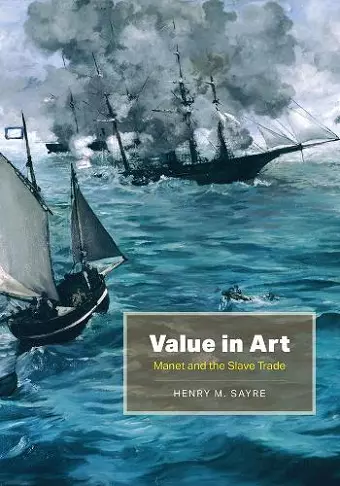Value in Art
Manet and the Slave Trade
Format:Hardback
Publisher:The University of Chicago Press
Published:17th May '22
Should be back in stock very soon

Art historian Henry M. Sayre traces the origins of the term “value” in art criticism, revealing the politics that define Manet’s art.
How did art critics come to speak of light and dark as, respectively, “high in value” and “low in value”? Henry M. Sayre traces the origin of this usage to one of art history’s most famous and racially charged paintings, Édouard Manet’s Olympia.
Art critics once described light and dark in painting in terms of musical metaphor—higher and lower tones, notes, and scales. Sayre shows that it was Émile Zola who introduced the new “law of values” in an 1867 essay on Manet. Unpacking the intricate contexts of Zola’s essay and of several related paintings by Manet, Sayre argues that Zola’s usage of value was intentionally double coded—an economic metaphor for the political economy of slavery. In Manet’s painting, Olympia and her maid represent objects of exchange, a commentary on the French Empire’s complicity in the ongoing slave trade in the Americas.
Expertly researched and argued, this bold study reveals the extraordinary weight of history and politics that Manet’s painting bears. Locating the presence of slavery at modernism’s roots, Value in Art is a surprising and necessary intervention in our understanding of art history.
“Henry M. Sayre’s Value in Art: Manet and the Slave Trade is an impressive, insightful, and thoroughly persuasive work. Impeccably researched and wide-ranging in its breadth of discussion, Sayre’s highly perceptive analysis centers on Manet but proceeds outward with masterful expertise and nuance, incorporating poetry, music, fiction, prose, French and American history and culture, politics, and––naturally––art. With sensitivity and imagination, with balance and tact, Sayre employs floating signifiers to track the insidious path of colonialism and slavery that underlie modernist art and culture. What he reveals of this depraved heart of darkness inspires the reader to new modes of understanding about the complexity of modernist representation––both its achievements and its shame.” * Geoffrey Green, San Francisco State University *
“Value is a difficult art historical term, too often reduced to questions of price or hue. In Value in Art: Manet and the Slave Trade, Sayre achieves an eye-opening feat, namely, the unveiling of the term’s true political economy. Focused on Édouard Manet’s key 1860s paintings, Sayre articulates the period’s commodification of the black and female body—through slavery and prostitution—as the true subject of early modernist painting in France. This is indispensable reading for all scholars of Manet, the 1860s, and the politics of representation, as well as modernism’s fraught relationship to the history of slavery.” * André Dombrowski, University of Pennsylvania *
"The art historian Henry Sayre promises to “reveal the politics that define the art of Édouard Manet” in this analysis of the French artist’s famous painting Olympia (1863), which shows a white prostitute and her black maid bringing her flowers. . . . Sayre explains in the preface: 'Almost all textbooks—and almost all art teachers, for that matter—refer to the light reflective nature (high or low) of light and dark colours in terms of their relative value, and I decided to look at the history of this usage.'" * The Art Newspaper *
ISBN: 9780226809823
Dimensions: 254mm x 178mm x 28mm
Weight: 1080g
256 pages